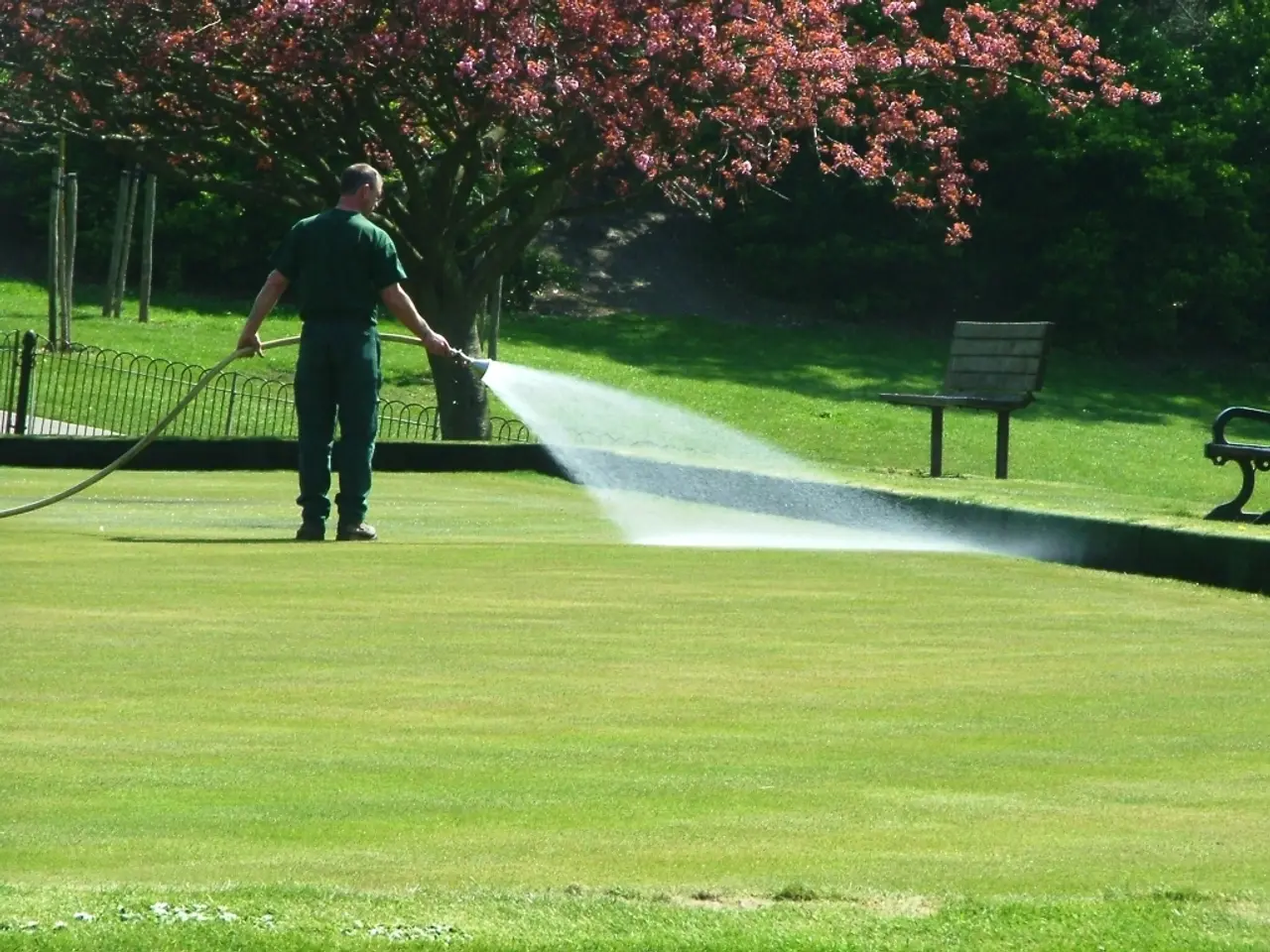Optimize Raised Garden Beds by Employing Drip Irrigation for Maximum Yield with Minimal Water Usage
Drip irrigation systems are an efficient way to water your raised beds, minimizing water waste and encouraging healthy plant growth. In this article, we'll guide you through the process of selecting, installing, and winterizing a drip irrigation system for raised beds.
## Choosing a Drip Irrigation System
When selecting a drip irrigation system, consider the size of your raised beds, the types of plants you're growing, and your budget. Choose a system that can efficiently cover your plants and cater to their specific watering needs.
Drip tape or tubing, emitters, and fittings and connectors are essential components to consider. Drip tape is suitable for rows of vegetables or crops, while tubing offers more versatility for varying garden layouts. Adjustable emitters allow for customization based on plant needs.
## Installing a Drip Irrigation System
Preparing the system involves connecting it to a water source and laying out the mainline tubing along the edge of the raised bed. For tubing, use couplers to connect the drip tubing to the mainline, running it through the bed. For drip tape, lay it out along the rows, securing it with stakes. Install emitters near the base of plants to ensure water is delivered directly to the roots.
## Winterizing a Drip Irrigation System
To winterize your drip irrigation system, turn off the water supply, drain the system, remove batteries from electronic components, insulate components, and store any removable components in a dry place.
In cold climates, it's essential to winterize a drip irrigation system by draining the water out of the system, replacing line ends to keep dirt out, storing the filter indoors, and flushing the system when starting up again in the spring.
## Retrofitting Existing Raised Beds
As an alternative, existing raised beds can be retrofitted with drip irrigation. Use elbows and various lengths of pipe to allow the drip lines to be at ground level between the beds.
Drip irrigation offers numerous benefits, including a very focused application of water, keeping it off the leaves and minimizing evaporation. Watering with drip irrigation encourages the roots to grow down and deprives weeds growing between plants of water, causing them to die.
When starting with drip irrigation, consider buying a complete system from a supply company, which will be based on the number of containers to be irrigated. Remember, water in the components of a drip irrigation system can freeze in cold temperatures, which can cause the tubes to split due to expansion.
Teo Spengler, a master gardener and docent at the San Francisco Botanical Garden, has extensive experience in horticulture and gardening. She currently splits her life between San Francisco and the French Basque Country, giving her experience of gardening in a range of climates. Teo hosts public tours at the San Francisco Botanical Garden.
By following these steps, you can effectively choose, install, and prepare your drip irrigation system for the winter months, ensuring it remains functional and efficient when spring arrives. Happy gardening!
When planning a home-and-garden lifestyle, incorporating a drip irrigation system into your raised-bed garden is a wise choice. Not only does it promote efficient water use and healthy plant growth, but it also reduces water waste, making it an eco-friendly gardening choice. To cater to different garden layouts and specific plant watering needs, consider the components such as drip tape or tubing, emitters, and fittings and connectors when selecting a drip irrigation system.




